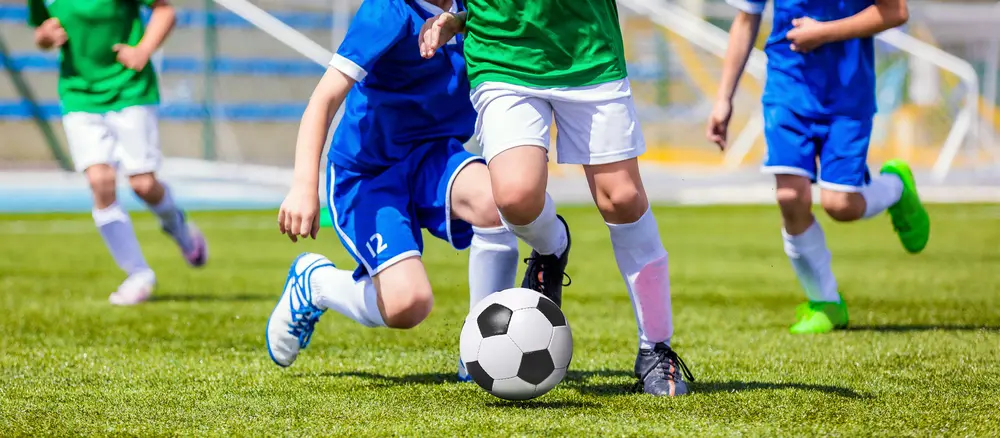Are you a fitness enthusiast or a dedicated athlete who has suddenly been sidelined by a nagging, persistent pain in your calf and ankle? That sharp or aching sensation that flares up during or after activity could be the result of Achilles tendonitis. The Achilles...
Spinal cord injuries are among the most serious and life-altering injuries a person can sustain. The spinal cord, a complex bundle of nerves, is the primary pathway for communication between the brain and the rest of the body. When it’s damaged, a patient could be...
People who suffer from varicose veins, chronic venous insufficiency (CVI), and other related health conditions know that their symptoms involve more than just cosmetic concerns. They also frequently cause pain, swelling, and more serious health problems. For these...
Soccer Injuries to Avoid This Fall Season

We’ve all seen soccer players sidelined by common but painful injuries like ankle sprains, knee ligament tears, and muscle strains. The combination of running, sudden stops, quick cuts, and potential physical contact makes the body, particularly the lower extremities, vulnerable. However, it’s entirely possible to play at your best and compete hard while still minimizing your chances of getting hurt. Below, our orthopaedic specialists cover some of the most common soccer injuries and how to avoid them this fall season.
Common Soccer Injuries and How to Avoid Them
While injuries can happen to any part of the body, a soccer player’s legs take the brunt of the impact. Here’s a look at some of the most frequent lower-body injuries we see from soccer players and the preventative steps you (or your child) can take.
Ankle Sprains
An ankle sprain occurs when the strong ligaments that support the ankle joint are stretched or torn. This most commonly happens when the foot rolls inward and damages the ligaments on the outside of the ankle.
This is arguably the most common soccer injury and can happen from landing awkwardly after a jump for a header, planting your foot incorrectly during a quick change of direction, or, of course, from an opponent’s tackle. Uneven playing surfaces can also be a major culprit.
How to Avoid It:
- Strengthen Your Ankles: Focus on exercises that improve balance and proprioception (your body’s awareness of its position in space). Simple single-leg stands, balancing on a wobble board, or performing figure-eights with your ankle can all help.
- Wear Proper Gear: Ensure your cleats are a good fit and appropriate for the playing surface.
- Taping and Bracing: If you have a history of ankle sprains, consider prophylactic (preventative) ankle taping or wearing a lace-up ankle brace during practices and games for added support.
- Warm Up Before Every Practice and Game: Focus on dynamic stretches and light jogging to prepare the muscles and ligaments.
ACL (Anterior Cruciate Ligament) Tears
The ACL is a critical ligament deep inside the knee joint that provides stability, particularly for rotational movements and forward/backward shifting of the shin bone. A tear can be a partial or complete rupture of this ligament, often resulting in significant pain, swelling, and a feeling of the knee giving way.
ACL tears in soccer are often non-contact injuries, as they typically occur during sudden deceleration, a rapid change of direction, or landing from a jump with poor mechanics (such as landing on a straight leg or with the knee caving inward).
How to Avoid It:
- Focus on Proper Landing Technique: Be sure to land softly on the balls of your feet with your knees bent.
- Strengthen Supporting Muscles: Build up your hamstrings and glutes to balance out strong quadriceps.
- Participate in Agility Drills: Practice cutting and pivoting with correct form, avoiding letting the knee collapse inward.
- Prioritize Conditioning: Fatigue is a major risk factor, and injuries often happen late in the game when players are tired and their form breaks down. Therefore, maintaining excellent cardiovascular fitness is a key part of avoiding common soccer injuries like ACL tears.
Hamstring Strains
A hamstring strain (also referred to as a pulled hamstring) is a tear in one or more of the three large muscles that run down the back of your thigh. These strains can range from a mild pull to a complete rupture. This injury is common during sprinting, sudden acceleration, or over-striding while kicking.
How to Avoid It:
- Always Warm Up: Never play a game cold. A proper dynamic warm-up (think high knees, butt kicks, leg swings, and walking lunges) is essential to prepare the muscles for explosive activity.
- Use Eccentric Strengthening Exercises: Don’t just strengthen your hamstrings—train them for their specific job. Exercises like Nordic hamstring curls or good mornings are excellent for building eccentric strength.
- Stay Hydrated: Dehydrated, tired muscles are much more prone to cramping and straining.
Shin Splints
Shin splint is the common term for pain along the inner edge of the shinbone (tibia). It’s an overuse injury, typically involving inflammation of the muscles, tendons, and bone tissue in that area.
Soccer players often suffer from shin splints at the beginning of the season. This is because they rapidly increase their training intensity or play on hard surfaces. Worn-out cleats, poor running mechanics, and flat feet can also contribute to this injury. If left untreated, shin splints can lead to stress fractures.
How to Avoid It:
- Gradually Build Endurance: Avoid the “too much, too soon” trap. Gradually increase the intensity, duration, and frequency of your training to allow your body to adapt.
- Wear Proper Footwear: Replace worn-out cleats that have lost their support and shock absorption.
- Care for Your Calves: Keep your calf muscles strong and flexible, as tight calves can pull on the shin.
- Avoid Overly Hard Surfaces: When possible, do your conditioning runs on softer surfaces like grass or a track rather than pavement.
When an Injury Happens, We’re Here to Help
Whether you’re a parent of a young athlete or a weekend warrior yourself, these prevention tips can minimize the chances of a soccer injury this fall.
Of course, sometimes, despite your best efforts, injuries happen. In the event you or your child gets hurt during a game, our sports medicine specialists are here to get them back up on their feet. We begin with a thorough assessment of the injury, which includes listening to how it happened and performing a detailed physical examination. From there, we’ll recommend a personalized treatment plan. This plan might involve targeted physical therapy to rebuild strength and mobility, compression and elevation, medication, or, if necessary, surgical intervention to repair the joint.
Don’t let an injury keep you out of the game for good; get a comprehensive evaluation and a plan to return to the sport you love by partnering with Premier Orthopaedics. We specialize in foot, ankle, and knee care, as well as trauma and fracture care, so that no matter which injury you’re dealing with, we have the expertise to help.
Schedule an appointment with our team in the Greater Philadelphia area today to get started.
